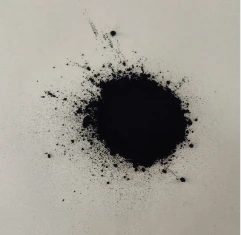Production of Sulfur Dyes in Chemical Manufacturing Facilities
The Role of Sulfur Dyes in Modern Textiles An Insight into Sulfur Dye Factories
In the realm of textile manufacturing, color plays a pivotal role in defining the aesthetic appeal and marketability of products. Among the various dyeing techniques and materials available, sulfur dyes have carved out a niche for themselves due to their unique properties and advantages. Sulfur dyes are particularly renowned for their vibrant colors and exceptional fastness properties, making them desirable for a variety of textiles, particularly cotton and other cellulose fibers.
Sulfur dyes are a class of dyes that contain sulfur, which enables them to provide deep, lustrous colors. They are produced through a complex chemical process that typically involves the reaction of sulfur with organic compounds. These dyes are different from other types of dyes, such as reactive dyes or direct dyes, in terms of their application and fixation process. Generally, sulfur dyes are initially insoluble in water, but they can become soluble when reduced, allowing them to penetrate the fibers effectively.
The Manufacturing Process
The production of sulfur dyes takes place in specialized factories that are equipped with the necessary technologies and equipment. The manufacturing process typically starts with the synthesis of dye intermediates from raw materials, which may include compounds like aniline and various organic chemicals. The intermediates are then reacted with sulfur to create the final dye products. This step is crucial, as it dictates the vividness and stability of the final colors.
Once the dyes are synthesized, they undergo a thorough quality control process to ensure they meet industry standards. This includes testing for color strength, shade accuracy, and fastness properties, including lightfastness, washfastness, and rubfastness. An effective sulfur dye factory will prioritize these quality control measures to guarantee that the dyes produced can withstand various textile applications and environmental conditions.
Advantages of Sulfur Dyes
One of the compelling advantages of sulfur dyes is their excellent washfastness and lightfastness. These dyes exhibit strong resistance to fading when washed or exposed to sunlight, making them an excellent choice for outdoor fabrics and garments that require long-lasting color. Additionally, sulfur dyes are relatively easy to apply, which is particularly appealing for textile manufacturers seeking efficiency and cost-effectiveness.
sulfur dyes factory

Another key benefit is the economy of sulfur dyes compared to other dye classes. They are generally more affordable, which translates into cost savings for manufacturers and consumers alike. This is particularly important in the highly competitive textile market, where price competitiveness can significantly influence purchasing decisions.
Environmental Considerations
Despite their numerous advantages, the production and use of sulfur dyes have raised environmental concerns. The manufacturing process can generate hazardous byproducts if not managed properly, and some sulfur compounds can be environmentally damaging. As a response, many sulfur dye factories have begun to adopt more sustainable practices, including waste reduction, recycling of materials, and improved emissions controls.
Moreover, the textile industry as a whole is increasingly shifting towards greener practices, with many factories investing in technologies that reduce water consumption and chemical waste. Eco-friendly formulations of sulfur dyes are also emerging to address consumer demands for sustainable products, ensuring that color does not come at the expense of environmental health.
The Future of Sulfur Dyes
As the textile industry continues to evolve, the role of sulfur dyes is likely to expand further. Innovations in dye chemistry and application techniques promise to enhance their properties even further, allowing for brighter colors and improved fastness. Research into biodegradable and more sustainable sulfur dye formulations is also underway, creating opportunities for the industry to offer environmentally friendly alternatives.
In conclusion, sulfur dyes represent a vital component of modern textile manufacturing. With their unique attributes, coupled with the industry's ongoing commitment to sustainability, sulfur dye factories are likely to play a crucial role in meeting the demands of both manufacturers and consumers. As technology progresses and environmental awareness increases, the future for sulfur dyes appears bright, promising vibrant colors that adhere to eco-friendly standards.
-
The Timeless Art of Denim Indigo Dye
NewsJul.01,2025
-
The Rise of Sulfur Dyed Denim
NewsJul.01,2025
-
The Rich Revival of the Best Indigo Dye
NewsJul.01,2025
-
The Enduring Strength of Sulphur Black
NewsJul.01,2025
-
The Ancient Art of Chinese Indigo Dye
NewsJul.01,2025
-
Industry Power of Indigo
NewsJul.01,2025
-
Black Sulfur is Leading the Next Wave
NewsJul.01,2025

Sulphur Black
1.Name: sulphur black; Sulfur Black; Sulphur Black 1;
2.Structure formula:
3.Molecule formula: C6H4N2O5
4.CAS No.: 1326-82-5
5.HS code: 32041911
6.Product specification:Appearance:black phosphorus flakes; black liquid

Bromo Indigo; Vat Bromo-Indigo; C.I.Vat Blue 5
1.Name: Bromo indigo; Vat bromo-indigo; C.I.Vat blue 5;
2.Structure formula:
3.Molecule formula: C16H6Br4N2O2
4.CAS No.: 2475-31-2
5.HS code: 3204151000 6.Major usage and instruction: Be mainly used to dye cotton fabrics.

Indigo Blue Vat Blue
1.Name: indigo blue,vat blue 1,
2.Structure formula:
3.Molecule formula: C16H10N2O2
4.. CAS No.: 482-89-3
5.Molecule weight: 262.62
6.HS code: 3204151000
7.Major usage and instruction: Be mainly used to dye cotton fabrics.

